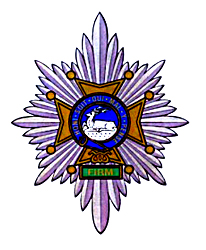 W
WII Anti-Aircraft Corps was a high-level formation of Britain's Anti-Aircraft Command from 1940 to 1942. It defended the Midlands and North West of England and Wales during the Blitz and the middle years of World War II.
 W
WThe 45th (Nottinghamshire) Regiment of Foot was a British Army line infantry regiment, raised in 1741. The regiment saw action during Father Le Loutre's War, the French and Indian War and the American Revolutionary War as well as the Peninsular War, the First Anglo-Burmese War and the Xhosa Wars. Under the Childers Reforms it amalgamated with the 95th (Derbyshire) Regiment of Foot to form the Sherwood Foresters in 1881.
 W
WThe 1st Lincolnshire Artillery Volunteers were formed in 1860 as a response to a French invasion threat. They fought on the Western Front during World War I. In World War II, the unit took part in the Battle of France and Dunkirk evacuation, the Anglo-Iraqi War with 'Kingcol', the Western Desert Campaign in which it distinguished itself at the Battle of Sidi Rezegh, and finally fought as infantry in the Chindits. The unit was disbanded in 1947.
 W
WThe South Nottinghamshire Hussars was a unit of the British Army formed as volunteer cavalry in 1794. Converted to artillery in 1922, it formed a battery of a Territorial Army regiment until it was placed in suspended animation.
 W
WThe South Nottinghamshire Hussars was a unit of the British Army formed as volunteer cavalry in 1794. Converted to artillery in 1922, it formed a battery of a Territorial Army regiment until it was placed in suspended animation.
 W
WThe South Nottinghamshire Hussars was a unit of the British Army formed as volunteer cavalry in 1794. Converted to artillery in 1922, it formed a battery of a Territorial Army regiment until it was placed in suspended animation.
 W
WThe 115th Field Regiment was a part-time unit of Britain's Royal Artillery (RA), raised as part of the Territorial Army (TA) just before the outbreak of World War II. It served in the Battle of France and the Burma Campaign, and in the postwar TA.
 W
W140 Corps Engineer Regiment was a short-lived Territorial Army (TA) unit of the Royal Engineers based in the North Midlands of England during the 1960s.
 W
WThe South Nottinghamshire Hussars was a unit of the British Army formed as volunteer cavalry in 1794. Converted to artillery in 1922, it formed a battery of a Territorial Army regiment until it was placed in suspended animation.
 W
WThe South Nottinghamshire Hussars was a unit of the British Army formed as volunteer cavalry in 1794. Converted to artillery in 1922, it formed a battery of a Territorial Army regiment until it was placed in suspended animation.
 W
WThe South Nottinghamshire Hussars was a unit of the British Army formed as volunteer cavalry in 1794. Converted to artillery in 1922, it formed a battery of a Territorial Army regiment until it was placed in suspended animation.
 W
WThe South Nottinghamshire Hussars was a unit of the British Army formed as volunteer cavalry in 1794. Converted to artillery in 1922, it formed a battery of a Territorial Army regiment until it was placed in suspended animation.
 W
WNo.2 Flying Training School is a Flying Training School (FTS) of the Royal Air Force (RAF). It is part of No. 22 (Training) Group that delivers glider flying training to the Royal Air Force Air Cadets. Its headquarters is located at RAF Syerston in Nottinghamshire and gliding takes places from several sites throughout the UK using the Grob Viking T1. The RAF Central Gliding School is also under its command.
 W
WNo. 12 Group of the Royal Air Force was a command organization that existed over two separate periods, namely the end of World War I when it had a training function and from just prior to World War II until the early 1960s when it was tasked with an air defence role.
 W
WThe Nottinghamshire Royal Horse Artillery was a Territorial Force Royal Horse Artillery battery that was formed in Nottinghamshire in 1908. It saw active service during the First World War in the Middle East – in the Senussi Campaign and the Sinai and Palestine Campaign – from 1915 to 1918. A second line battery, 2/1st Nottinghamshire RHA, served in the Mesopotamian Campaign in 1917 and 1918 as a Field Artillery battery. Post-war, it was reconstituted as a Royal Field Artillery battery.
 W
WThe Sherwood Foresters was a line infantry regiment of the British Army in existence for just under 90 years, from 1881 to 1970. In 1970, the regiment was amalgamated with the Worcestershire Regiment to form the Worcestershire and Sherwood Foresters Regiment, which in 2007 was amalgamated with the Cheshire Regiment and the Staffordshire Regiment to form the present Mercian Regiment. The lineage of the Sherwood Foresters is now continued by The Mercian Regiment.
 W
WThe Sherwood Rangers Yeomanry (SRY) is one of the six squadrons of the Royal Yeomanry (RY), a light cavalry regiment of the Army Reserve. Designated as 'A' Squadron, the Sherwood Rangers Yeomanry's current role is to support the Light Cavalry Regiments on operations by providing skilled reconnaissance soldiers.
 W
WThe South Nottinghamshire Hussars was a unit of the British Army formed as volunteer cavalry in 1794. Converted to artillery in 1922, it formed a battery of a Territorial Army regiment until it was placed in suspended animation.
 W
WThe South Nottinghamshire Hussars was a unit of the British Army formed as volunteer cavalry in 1794. Converted to artillery in 1922, it formed a battery of a Territorial Army regiment until it was placed in suspended animation.
 W
WThe Worcestershire and Sherwood Foresters Regiment was an infantry regiment of the British Army, part of the Prince of Wales' Division. The regiment served as the county regiment for Derbyshire, Nottinghamshire and Worcestershire.